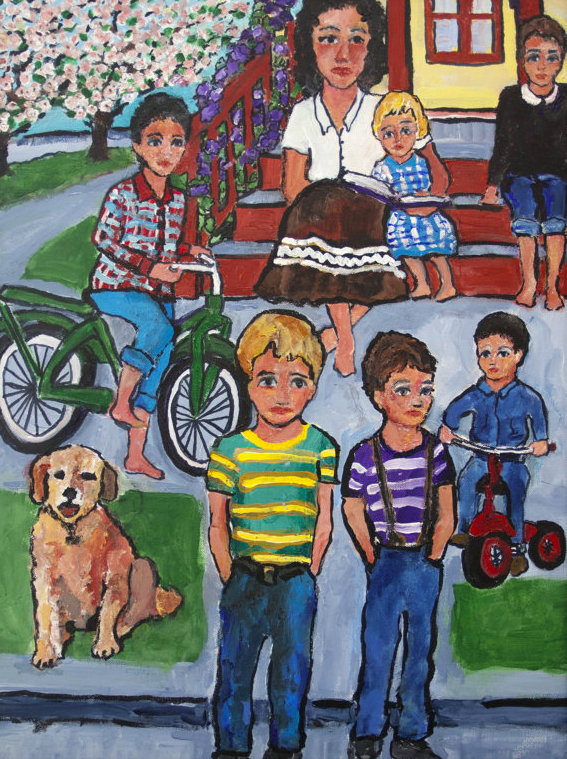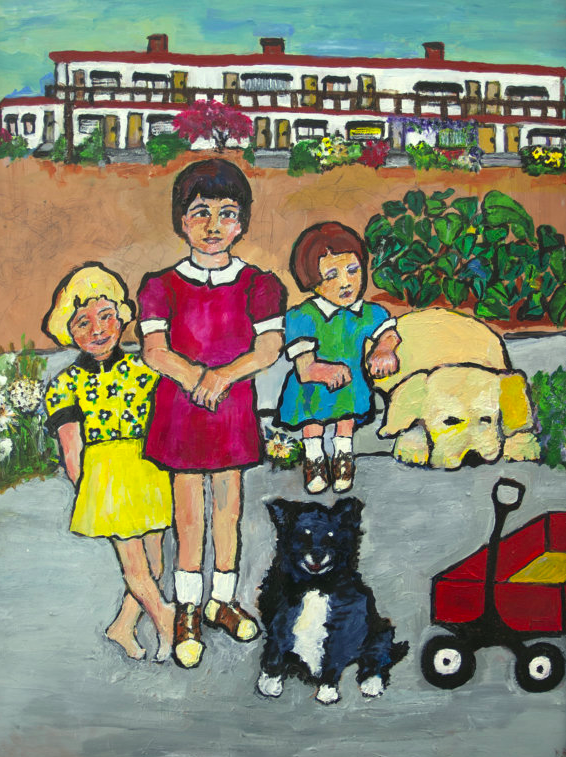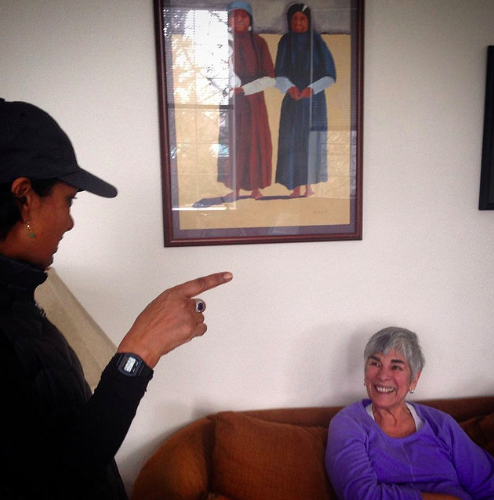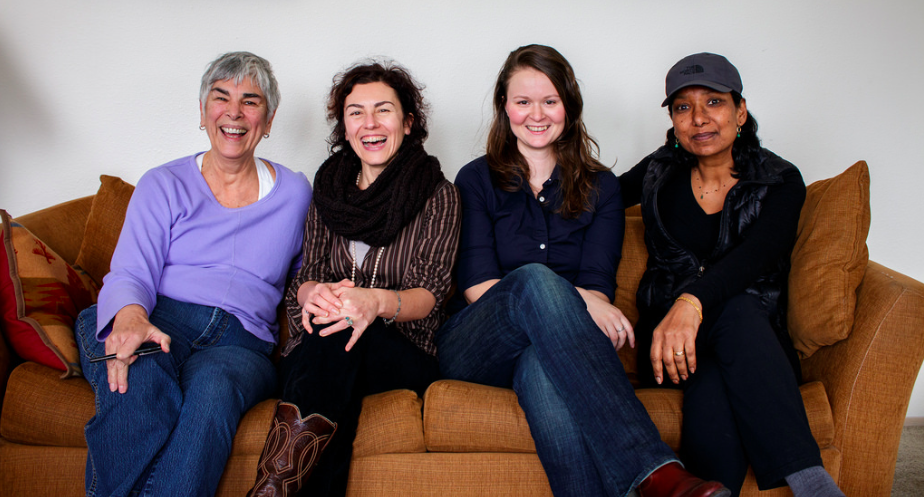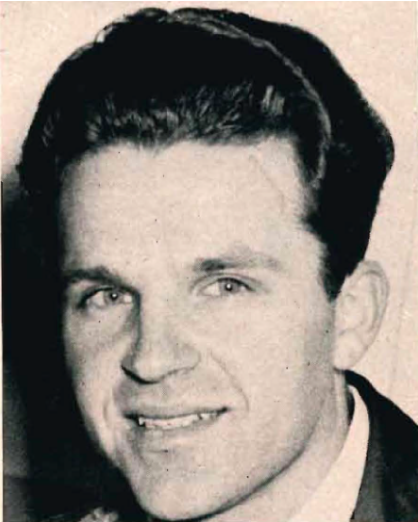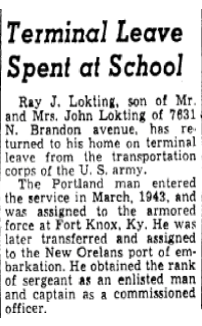Photo by: Meredith Lawrence
If you are looking for a meaningful way to celebrate Black History Month and you are in the Portland area, join a community celebration for Mrs. Thelma Glover's 99th birthday, on Sunday 19th, 3pm, at the historic Billy Webb Elks Lodge in Portland. You can still honor her from afar, by contributing to a crowd fund to help paying her medical bills. She lives by herself, and recently suffered a fall.
Ms.Thelma, as she prefers to be called since it makes her feel young, is a former Vanport resident. Last October we captured her memories as part of our on-going oral history project, and since she expressed the wish to see some photos of the city where she and her husband started their life together in 1943, we brought her the whole exhibit "Vanport: The Surge of Social Change" we co-curated with Oregon Black Pioneers for last year Vanport Mosaic Festival! Watch her story, Step By Step, and you will understand why everyone falls in love with this remarkable lady.
There is more to her story, of course. She is one of the last-living people who were displaced by the Emmanuel Hospital expansion (that was never realized...) in 1970s. The Oregonian recently published a great article and video about this painful chapter of her life. Check out the article HERE !
Did we mention there is a crowd funding initiative for Ms. Thelma?
The Vanport Mosaic Team
Vanport Mosaic is thrilled to host a StoryWork Facilitation workshop, taught by StoryCenter director Joe Lambert and co-facilitated by our own story midwife Laura Lo Forti. "Holding a space for deep listening and transformational learning is sometimes a calling, but it is also a skill that can be learned and assessed. This two-day workshop offers participants tools and practice in facilitating StoryWork. More than ever, we need our helping professionals, our teachers, and our leaders to understand how to listen and support the emergence of voice."
Thank YOU for contributing to a successful run of LEFT HOOK during the Fertile Ground Festival of new works. This staged reading, although not a full production, was highly polished, powerful and moving, especially because it featured such a strong and talented cast under the fine direction of Damaris Webb, once a boxer herself. The icing on the cake was a post-show panel discussion by a group of honored guests who had either been involved in the world of boxing or who played an important role in the community such as the founder of the Portland Black Panthers. Here is a photo of most of the cast of LEFT HOOK, which will see a full production at the Vanport Mosaic Festival in 2018.
Vanport Mosaic has been selected for the Columbia Slough Watershed Council 2016 Achievement and Leadership Award! We are so honored, and filled with gratitude for the continuous support from so many organizations and individuals. Now more than ever we are committed to tell stories that build communities.
Get your tickets for performances (01/20-22) at Festival's Box Office
Albina residents picket the Portland Development Commission, 1973 (Credits: Oregon Historical Society)
Left Hook is a work of fiction. The characters are all imagined and the time course of events has been compressed. The history underlying the story, however, is all too real. From the mid-twentieth century on, there has been a sequential displacement of thousands of people and scores of businesses in Portland’s African-American community, first in the name of “urban renewal,” more recently in the name of “gentrification.”
The scenario depicted in Left Hook – the aborted expansion of Emanuel Hospital and the resulting disruption of the surrounding neighborhood – struck many, even at the time, as especially egregious. Decisions were made by those in power, and the consequences were borne by those with limited political and economic influence. What happened at the end was breathtakingly indefensible and utterly Kafkaesque.
In 2012, Emanuel Hospital offered a public apology for its role in what transpired some forty years before. But the hospital was only one of multiple players, a group that also included city authorities, federal officials and out-of-state private consultants. The actual sequence of events unfolded over several years, but this much is clear: Hundreds of houses and dozens of businesses were razed, yet the planned hospital expansion wound up being cancelled due to lack of funds. Blocks filled with bustling homes and neighborhood stores were transformed into empty lots, and all for naught. Recovery has taken decades and is still not complete.
The philosopher George Santayana famously wrote “those who cannot remember the past are condemned to repeat it,” which begs the question: Where do we go from here?
VAN PORT MOSAIC PROUDLY PRESENTS LEFT HOOK, RICH RUBIN'S NEW PLAY ABOUT GENTRIFICATION AND COMMUNITY DISPLACEMENT IN 1970’S PORTLAND, SET IN AN ALBINA BOXING CLUB.
Directed by Damaris Webb
Presented as part of the 2017 Fertile Ground Festival
4 Public Performances: Friday 1/20 @ 7:30pm, Saturday 1/21 @ 2pm & 7:30pm, Sunday 1/22 @ 2pm
Venue: Interstate Firehouse Cultural Center, 5340 N. Interstate Ave.
Admission: Pay What You Can. Suggested $10; $5 Students/Seniors
Buy tickets here, or at the door one hour before curtain
Run time: 2hrs with intermission - join us for a curated conversation following the Sunday matinee.
"If Damaris Webb and Vanport Mosaic have any say in it, Portland’s Vanport Flood, which displaced a huge swath of our African-American community in 1948, will be raised from a footnote to a headline in our region’s history. That was the mission of playwright Rich Rubin’s Cottonwood in the Flood, which was workshopped at PCS’s JAW Festival in 2012, then performed as a staged reading at Fertile Ground in 2015 and as a play at Interstate Firehouse in 2016. Now The Vanport Mosaic and Rubin shift the spotlight to the world-famous (yet like the floods, too-oft-overlooked) Knott Street Boxing Gym, and the fighters who’ve been sparring and winning there since 1950, just after the Flood."
http://www.orartswatch.org/fertile-ground-curtains-almost-up/
Vanport Mosaic presents
A new play about gentrification and community displacement in 1970’s Portland, set in an Albina boxing club.
Presented as part of the 2017 Fertile Ground Festival
4 Public Performances: Friday 1/20 @ 7:30pm, Saturday 1/21 @ 2pm & 7:30pm, Sunday 1/22 @ 2pm
Venue: Interstate Firehouse Cultural Center, 5340 N. Interstate Ave.
Admission: Pay What You Can. Suggested $10; $5 Students/Seniors
Buy tickets here, or at the door one hour before curtain
Run time: 2hrs with intermission - join us for a curated conversation following the Sunday matinee.
Featuring: La'Tevin Alexander, Anthony Armstrong, Kenneth Dembo, Mario Depriest, Jasper Howard, Tonea Lolin & Jocelyn Seid.
I boxed the NYC Golden Gloves in the early ’90’s. It was one of the most rewarding times of my life. Up at 6am to take the train to Gleason’s gym, giving my whole mind & body to the training. The support of my community, my trust in my trainer, my faith in a fair fight, stepping into the ring and facing my opponent. And no punch is as beautiful as the left hook. Precise. Powerful. Clean. Because of its proximity to your opponent it’s a hard one for them to see coming, and as with any good blow, the power comes from your back foot, spiraling up through your body, with clean alignment you deliver the blow.
Many times I have encountered the lament “there are no black people in Portland”. It would certainly seem to be the case relying on the dominant narratives from mainstream media (like the TV series Portlandia) down to public school history books. Growing up as a person of color in NE Portland, I knew this wasn’t true, we were here - but somehow we weren’t seen.
History teaches us that the greatest influx of Portland’s African American population was due to the Great Migration from the south during the War Years to work the Kaiser shipyards. After the 1948 flood, those who had established a community in Vanport now found themselves redlined into the Albina neighborhood, one of the few areas of Portland blacks were allowed to rent or buy, due to the Rose City's discriminatory housing practices. Keep Portland weird indeed.
The storyline of Left Hook condenses a history that unfolded over a dozen years or more in Portland into a few months, touching on the intermixed experiences of African-American Soldiers returned from Vietnam, the aborted Legacy Emanuel Hospital Expansion, the Black Panther Movement, and Portland’s once world famous black boxing community in Albina. The all black cast focuses on the owner of the fictional Left Hook Boxing Club, and his struggle to claim a stake in the American Dream for himself and his family. To keep faith.
Rich Rubin’s new script allows us to hear voices of this all to true recent history, offering a start of an understanding of the intentional and systemic choices that lead to the continued displacement of the African American community in Portland. In this time of engaged discussion about gentrification, affordable housing and displacement of communities, I hope we can use this as a spring board to ask where do we want to go from here, and how do we imagine our city.
Damaris Webb, Left Hook Director
On Tuesday, December 13, 2016, Portland’s City Council will recognize and celebrate the winners of the 32nd Annual Spirit of Portland Awards. Vanport Mosaic is so honored to be included among so many committed individuals and groups “who make outstanding contributions to our community.”
The Vanport Mosaic is a collective of artists, historians, educators, storytellers, activists, and media makers. We joined forces and contributed our individual projects and efforts to re-discover and properly honor an essential and often-forgotten chapter of Oregon’s past. It is one of the many that never made it into textbooks and official records, relegated to the margins of our collective memories. It is yet another causality of the dangerous tides of historical amnesia.
This award means so much to us, and we are grateful to Portland’s City Council, and particularly to Commissioner Nick Fish who chose this project. It is, first and foremost, an official validation that this history does matter.
For our community-driven, artists-led organization fueled by creativity and idealism, this prestigious award is an invitation to keep doing what we are doing. Together with a generous grant from the City Special Appropriation Fund and the support from more partners and funders that I can list here, it makes possible to dream bigger. It galvanizes our commitment to surface the silenced histories that make this place we call home what it is today. We will keep using the power of personal stories, arts, and dialogue, as an invitation to all of you to join us in envisioning and building the community we wish to become. The Vanport Mosaic Festival 2016 was a glimpse of that possibility. Over the course of the four days over 2000 Portlanders of any racial and gender identity, age, and socio-economic background gathered to explore the history of Vanport, the catalyst of the racial mosaic that now exists in Portland and the region.
This short doc produced by Natalie Smith/Blue Chalk captures the spirit of the Festival.
On May 27-30, 2016 we honored the experience of the diverse community that was formed in Vanport, and we shared the personal stories and different perspectives through oral histories screenings, theater and poetry performances, an exhibit, and tours of the historic sites. We invited historians as well as community experts who lived there to help us understand the legacy of what used to be Oregon’s second largest city, and how the past continues to influences city dynamics today. We captured more memories with those generous enough to share them with us. We hosted a reunion for former Vanport residents, and had the privilege to witness their long-standing connections. Their friendships and ties born in a time of hardship and common hopes are unvaluable lessons in building a strong and resilient community.
Former Vanport residents reunion at Vancouver Ave First Baptist Church. (Photos by Julie Keefe)
On May 30th, the 68th anniversary of the flood that wiped out their city, in a moving ceremony at City Hall, Portland’s Mayor Charles Hales read our Proclamation and officially declared a Vanport Day of Remembrance.
Representatives of the Vanport Mosaic with Mayor Charles Hales and Portland City Council declaring May 30th a Vanport Day of Remembrance.
The driving force behind this truly grassroots on-going effort is our collective desire to honor our silenced local histories, celebrate resilience, and create opportunities to become the inclusive, diverse, and compassionate community we aspire to be.
In gratitude,
Story Midwife Laura Lo Forti, and the Vanport Mosaic Team
Save the date for Vanport Mosaic Festival 2017, May 26-29, 2017!
Published on June 7, 1948 - The Oregonian: Mr. and Mrs. Leonard C. Davis of 4608 N.E. 88th avenue didn't let race discrimination enter into their choice when the opened their home to victims of Vanport flood disaster. Here they chat over coffee with Mr. Bertha Freeman, who once lived at 2408 Cottonwood street. She was one of six displaced African Americans taken into Davis' home. January 14, 1963
Published on June 20, 1948 on the Oregonian: SCHOOL DAYS: The family of Albert Sheely is now living in a school room at Whitaker school. They lost their gas range, furniture and other effects in the flood. Sheely, who works for the Rose City cemetery, owns some acreage, but cannot build on it right now. He is hoping to get a tent so that his family may live on their land during emergency. The family has five small children and has lived in Portland for 14 years.
Scott and his father in Vanport, around 1946.
We were in Ft. Leonard Wood Missouri at war's end, and dad said he saw a Vanport sign on a bus, City of the Future, and decided to take his last airplane ride in the Army with mom and me out to Oregon, and Vanport. We were West Virginia people.
I was a toddler, but I remember driving out of the Vanport flood in 1948, and distinctly remember the shattered faces of the Vanport people working in the mud and debris, one of my earliest memories. By 1948 and the Flood, we were a 4 person family, my younger brother David was born during our years at Vanport. David lives today in north Clark county.
We settled in the Vancouver Heights across the Columbia in Vancouver after the Vanport flood, on the high ground above the old Kaiser shipyards, for 3 years, until dad was able to have a home built north of Vancouver in Hazel Dell, Clark County.
Dr. Phil Corson was ten years old and one of the first to discover the dike had broke. He sent his memories to the Vanport Mosaic, and we are thrilled to share them with you! We are continuing recording oral histories of those who lived in Vanport, but we are starting to gather and publish essays and written memories in an effort to honor everyone's story. If you need our support to record yours or your loved ones' memories, please drop us a line at vanportmosaic@gmail.com.
We were no different than hundreds of other families who moved into Vanport so dad could work for Kaiser Shipyards. The war effort was humming at top speed with one Victory ship created every day. I was little brother at age six in 1944 and the five of us moved into a tiny little two bedroom apartment and mom cooked on a two burner hotplate. It was kinda funny, but we really didn't know that we were poor.
When I was nine, dad made ice carts for my big brother and me to carry 50 & 100 pound cakes of ice from the ice house to ice boxes in other apartments. Once or twice I dumped one on the ground but I wasn't big enough to put it back in the cart. Us kids played marbles, carved wooden rubber guns using strips of old tire tubes and when we played cowboys and indians we used sticky stripes of paper from Swifts Meat packing plant for our makeshift headdresses.
But my most vivid memory was of Memorial Day 1948 when Vanport, the second largest city in Oregon, disappeared under ten feet of water from the Columbia River. It was flood season again and rumors were rampant that the dyke might not hold that year and the city would be flooded. My adult uncle Tom was visiting from the east coast and we got on two bikes that beautiful Sunday afternoon to ride about a mile north to check on the condition of the dyke. What I saw is with me today, imprinted on the mind of a ten year old. The railroad track which was on top of the dyke was now hanging over a gaping hole in the dyke and water from the Columbia River was rushing in with great force.
Uncle Tom and I sped back home yelling the dyke has broken, the dyke has broken! I will never know how many believed a ten year old, but it gave my parents several minutes head start on the rush to drive out. Mom made my older brother and me promise to take Spot, the dog of our out of town neighbors, and ride our bikes straight to our favorite gas station on Lombard Street. When we rode up onto Interstate Road, we stood and looked back at the most enthralling scene two young boys could ever see. The dozens of 14 unit apartment buildings were beginning to float around and crash into each other. Wow! What drama! Finally, my brother said, let's go! I will never forget my frantic mother standing off the curb at the gas station on Lombard looking for her boys.
Officials said only a couple dozen were killed by the flood that fateful day, but we know that there were many more than that. Just in our unit alone, two wonderful older ladies were killed. Mrs. Wonderlin was invited by her neighbor upstairs to ride out the flood, but they were never seen alive again. I have a VCR tape of footage taken from the air by a friend of our family. The film was so good that Newsreel paid him to use it on national television. If you would like to see it, let me know. After 68 years, the Vanport flood is still a vivid memory.
The Vanport Mosaic will never be complete. That is the nature of a project that aims to tell a silenced history 68 years after it happened. But that's not reason to stop searching. At least, that is what I tell myself to justify the hours spent getting lost in archives and obscure websites, following leads that more often than not end up nowhere.
On November 11th, 2015, when I came across this photo online, I surely hoped my year-long quest for one of the many missing pieces of the Vanport narrative would be close to an end.
"My Grandma Lillian relocated with my Grandpa from Chiloquin to Vanport," the caption said. Could this discovery lead me to someone finally able to shed light on the experience of Native Americans in the largest WWII public housing project in the U.S.? Was I one email away from connecting with a family who could share the story of one of 40,000 Native American men and women who during the war left their reservations to find jobs in defense industries across the nation?
Little did I know that this unexpected discovery will lead me to so much more than that. It brought color to a story told in black-and-white old photos. It gave me the gift of special encounters, and a deeper appreciation of art as a survival mechanism. That old photo lead me to fall in love with the beautiful paintings by Peggy Jo Ball Morrill, one of the children posing next to their mother in the wheelchair.
The one on the left is "Lillian and the Kids" and portrays Peggy's mother with her 6 children in North Portland. In the painting on the right Peggy leans on her dog, while her sisters Debbie and Evelyn stare at us. It's titled "Vanport," and behind the girls are the apartment where they lived until the flood wiped out the whole city and everything they owned, on Memorial Day 1948. Behind this painting there are many precious stories. Evelyn Bolme, the sibling in the middle, was 6 at the time and shared them with us and we will share them with you, during the upcoming Vanport Mosaic oral history screenings "Lost City, Living Memories: Vanport Through The Voices of Its Residents."
Some of these memories are hard to listen to, like the experience of her parents and their siblings, who were sent to boarding schools to learn the ways of white culture, their language and culture erased from their memory. Some others remind us how strong the human spirit is, like her Native roots preserved through the paintings of her father, and then through her sister Peggy's art. And some are heartbreaking, like the emptiness Peggy left when she passed away in August 2015, just 3 months before I discovered her art, thanks to that black-and-white photo I found online.
Artist Peggy Jo Ball Morrill in her studio.
Or maybe the photo found me, so that we could capture Evelyn's memories of her life with her family in Vanport, and discover Peggy's art. All I know is that I am filled with gratitude, for yet another piece of the mosaic we were able to add.
Laura Lo Forti, Story Midwife
Join us to honor this oral history, and buy Peggy Jo Ball Morrill's prints during the Vanport Mosaic Festival!
Join us at the screenings of Lost City, Living Memories: Vanport Through The Voices of Its Residents, on May 28th, 29th, and 30th, to honor this story, and many more. And if you will be touched as I am by the memories kept alive through art and determination, bring them in your life by buying a print of Peggy Jo Ball Morrill's painting of Vanport, as well as other beautiful pieces she created, through her website, or directly from her husband Dwight Ball Morrill during the Vanport Mosaic Festival, May 27-30th. Prints will be available at several events and venues, as well as the Emerson Street Art Gallery, 1006 NE Emerson St. You can visit the gallery Sunday 29th and Monday 30th, 3-6pm, and every weekend in June.
Welcome to our new site, designed by the local design firm, The Study. Look for upcoming news about the Vanport Festival and other happenings soon!
From Portland: A Food Biography by Heather Arndt Anderson
From Five Shades of Shadows by Tracey Daugherty:
We at Vanport Mosaic wish to take a moment to honor a voice which was lost. Following his Army service in World War II, Mr. Ray Lokting was one of the first returning veterans to enroll at Vanport Extension Center. From the beginning, he was heavily involved in campus life, having been elected to the office of Student Manager, where he had many responsibilities. Besides helping the multitude of school clubs organize their social activities, Student Managers published a weekly bulletin and headed up numerous charity drives. Mr. Lokting was a chairman of the very first alumni association and memorably presided over banquets and fundraisers. For well over 60 years, Mr. Lokting was an active and enthusiastic alumnus, participating in educational forums and working to help preserve the unique history of the college he loved. He passed away Dec. 20, 2015 at the age of 92. We extend our deepest sympathies to the Lokting family.
Artwork by Jeremy Okai Davis/Portland Mercury
From Portland Mercury, December 11, 2013 - Oregon's First African Americans , by Joe Streckert:
"Vanport's construction was of the cheap and temporary kind (the locals called the prefabricated dwellings "cracker-box houses"), and for much of the 1940s, Portland's first sizable black population was separated from the town proper by economics, administration, and the river. The town was destroyed by a flood in 1948, and many refugees from the disaster settled in the Albina neighborhood. More than 100 years after initial settlement, Portland finally had an African American population of appreciable size. The influx of that population didn't come about, though, because Portland had liberalized or become more open. Portland's first large black neighborhood materialized because a force of nature destroyed an industrial ghetto."
The Vanport Childcare centers are not the same childcare centers that Kaiser opened at the shipyards-common mistake so I had to get that out of the way. PPS put Kx2 classrooms in the community centers/childcare centers" in Guilds Lake and I assume at Vanport. Back to the question about the Helen Gordon Center building, that history is connected to Fruit and Flower. Fruit and Flower served the victims of the Vanport Flood in the trailers at Guild's Lake. This image I believe has alot to to with the professionalization of nursery staff and school staff-federal government had higher standards on training education for those jobs and had conflicts with PPS. ~ Dr.Tanya Gossard (seen on her Facebook page)














